Be sure to pick up the brochure Big Cypress: A Look Inside that provides a map and narrative of the Loop Road Scenic Drive (24 miles) at the Visitor Center. It was interesting to see this taxidermic endangered Florida panther on display there, too.
Almost all of the approximately 100 Florida panthers remaining reside in the contiguous areas of Big Cypress National Preserve and Everglades National Park. Approximately 10 are killed annually by motorists on the roads that cut through the swamps. Underpasses have been built for the panthers to reach the opposite side of the road avoiding vehicles altogether. Chain links fences along the roads direct the panthers to the underpasses. Reduced speeds are posted at night in panther regions in the hopes of reducing the annual death count of the endangered species. Biologists have been tagging and tracking the panthers here since 1982 (they catch and then release them by using swamp buggies and dogs in the swamp). All of these efforts are helping the panthers, but global warming is making the waters in the swamp rise thereby threatening their habitat.
Before leaving the Oasis Visitor Center, be sure to see the canal in front it. There is a boardwalk that enables you to safely see the many alligators living in the canal here.
There were lots of fish in the canal as well, including these 24" Florida gar.
The Anhinga dive deep and swim underwater to spear fish. The bird resurfaces, slides the capture fish to the tip of its beak, and then flips it into the air; catching and swallowing it head first. They are frequently seen with wings spread to dry their feathers and warm their bodies.
We drove west (retracing our drive) four miles from the Visitor Center and turned left onto Loop Road at Monroe Station. Our first stop along the gravel road was a view of a sawgrass prairie in the swamp. Raptors are often seen in these prairies sitting atop dead trees searching for prey. Red-shouldered hawks are the most common here. There is a cypress strand in the distance.
At the 2.2 mile mark of the Loop Road is the 5-mile Gator Hook Trail. Dogs are not permitted on trails due to the danger of alligators snatching them for a meal. Therefore, we were not able to do hike this swamp trail (although I know we would have enjoyed it).
Stopping frequently along the road for the next 13 miles, below are some of the sights. Many cypress trees were filled with bromeliads and Spanish moss (air plants) that grew in abundance. Also, there were many ferns growing around the base of the cypress trees...something we had not previously seen.
Waterfowl were everywhere...in the water, in trees, flying overhead.
But the star attractions on the Loop Drive are the alligators! And you must be very cautious as a couple of times when I stepped out of the car to snap a photo, there was one or two within 5' of me. Yikes!
Several alligators crossed the road and others just basked in the sun on the edge of the road like this one.
We spotted numerous large turtles swimming in the waters of the swamp. This yellow-bellied turtle was on the far shore.
There was something quite beautiful about the nearly-white trunks of the bald cypress forest growing in the swampy waters along this part of the Loop Road.
At mile 15.6 is the Loop Road Education Center that is operated by the Everglades National Park for groups of students. Across the street is the short Tree Snail Hammock Trail (maintained by Big Cypress National Preserve). The trail is well-maintained and we enjoyed seeing the various hardwood trees indigenous to the area. Note the vine that has spiraled around the small trunk of the tree and the crazy trunk of the tree in the next photo.
The very rare lingus tree snail is found nowhere else in the US. Shell collectors (humans) and birds have almost wiped out the species. We were hoping to find some here, but try as I might, I could not find one! John saved the day and found several of them (he is exceptionally good at spotting wildlife!) and I finally found one!
The shaded area of the trail protects the tree snails from their primary predators, crows and ravens. Their shells are have a beautiful luster.
The remains of the town of Pinecrest (1920s-19702) are evident from mile 16.5 to 18. The town was formed when the Tamiami Trail was being built. At its peak in the 1930s, the population was around 400. Some say Al Capone had a home, hotel, and brothel here. Famed fiddle-player, Ervin Rouse, retired here, living alone with his two dogs. He rocked the local bar whenever he played.
Members of the Miccosukee Tribe have homes along mile 21.9-23.9 of the Loop Road. The road ends at a bend in the Tamiami Trail, known as 40-Mile Bend, so named because it is only 40 miles to Miami from this point.
Just four miles to the east is the Shark Valley Visitor Center of Everglades National Park. We decided to check it out since we were so close.
There are exhibits in the Visitor Center, two trails (one .4 mile boardwalk and a 1 mile walk through a hardwood hammock), and a 15-mile road accessible only by the park Tram or bicycle (available for rent). Dogs are not permitted on any of these (including the road), so we spent some time along the canal and then departed knowing we had a long drive back to Bonita Springs.
On our drive home, we saw these birds as we turned north onto FL 29 from the Tamiami Trail. The large white with black feathers on its wings is the endangered wood stork (great egret and snowy egret can be seen behind them).
The pink ones, are, of course, the lovely roseate spoonbill. Late afternoon seems to be the best time to see them.
This is our favorite kind of adventure...beautiful wildlife, stunning landscapes, and interesting cultural history.
For additional information about the Big Cypress National Preserve (www.nps.gov/bicy) and Everglades National Park (www.nps.gov/ever), check them out online as there is lots more to do in both.


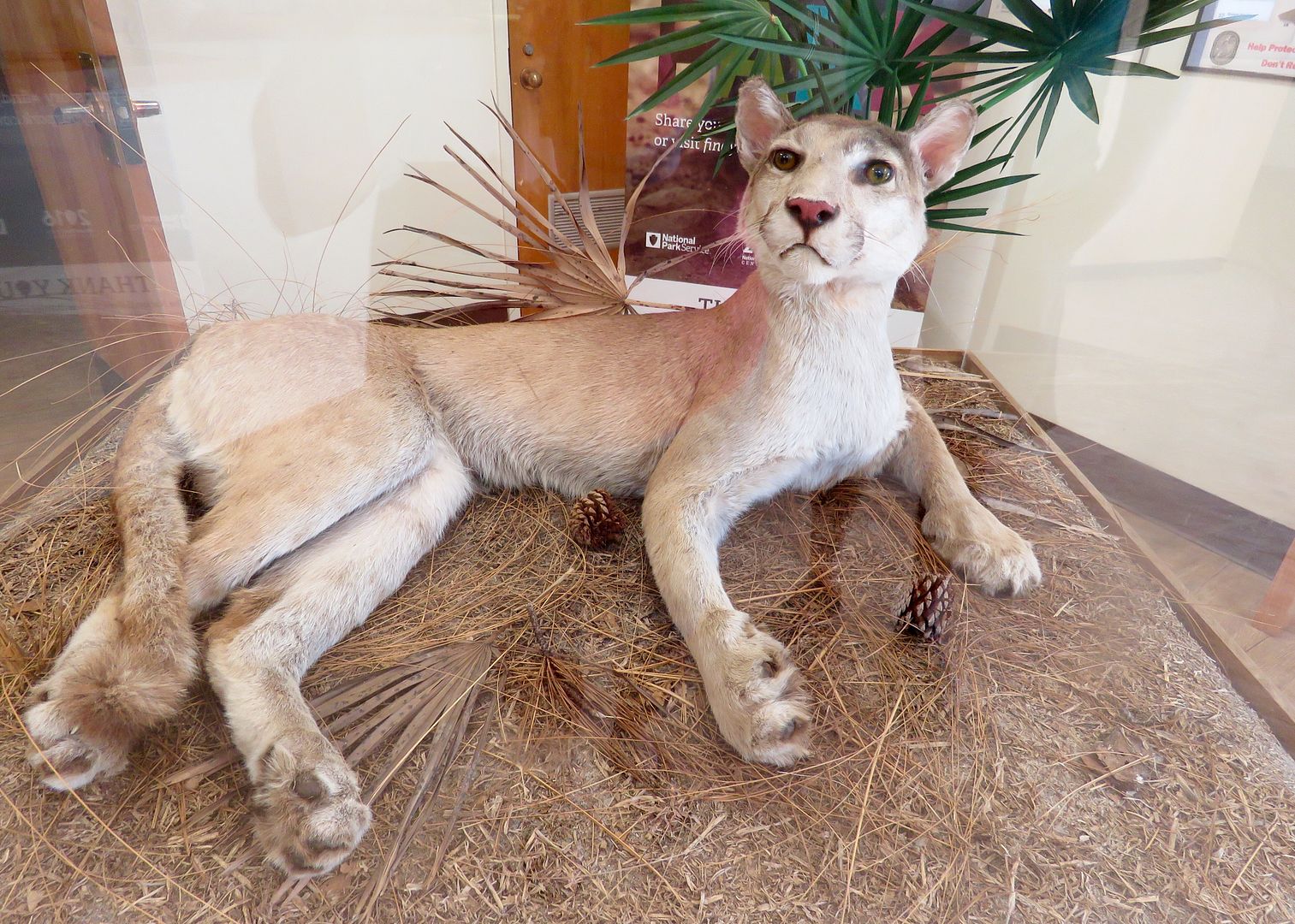
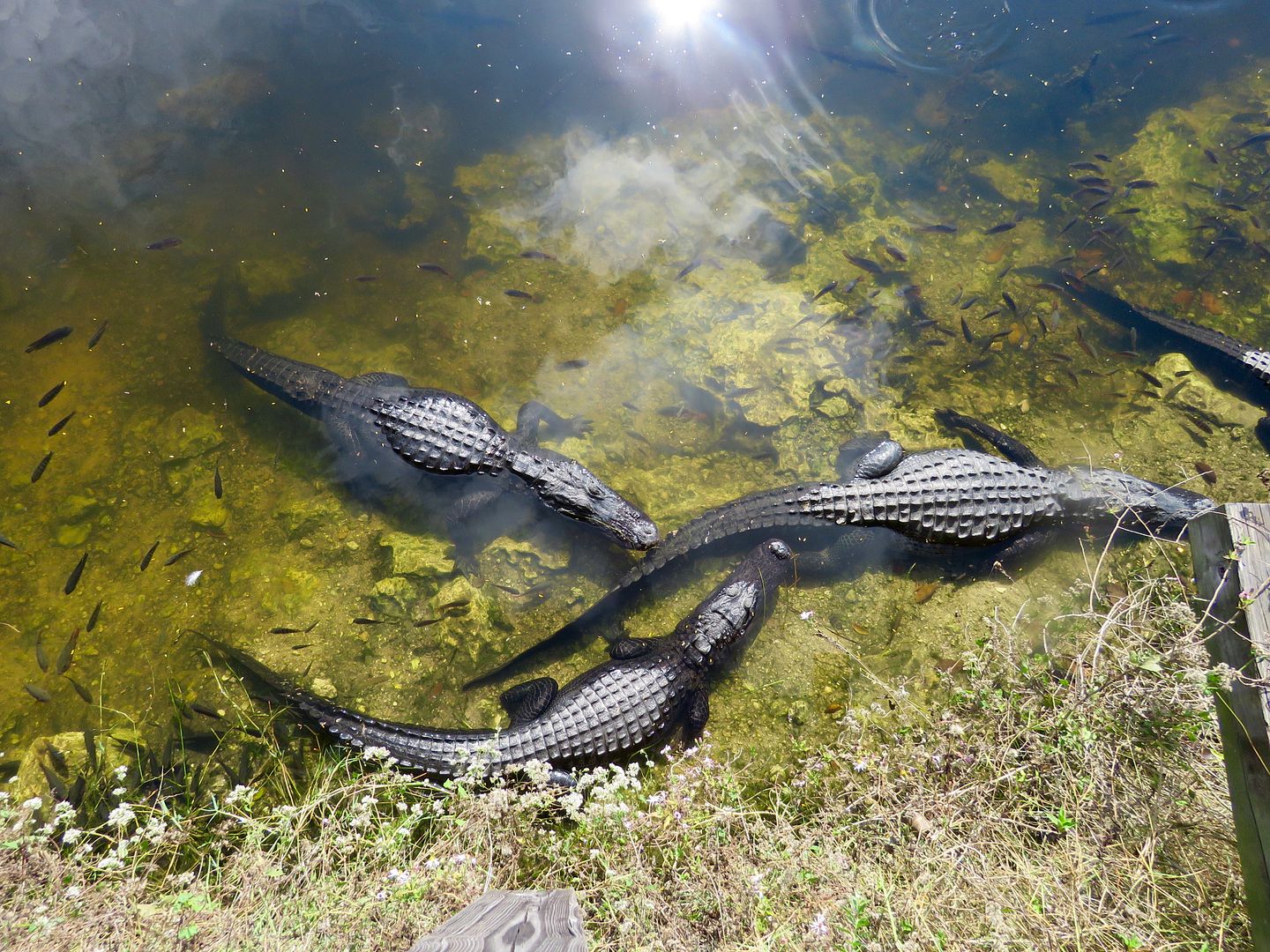
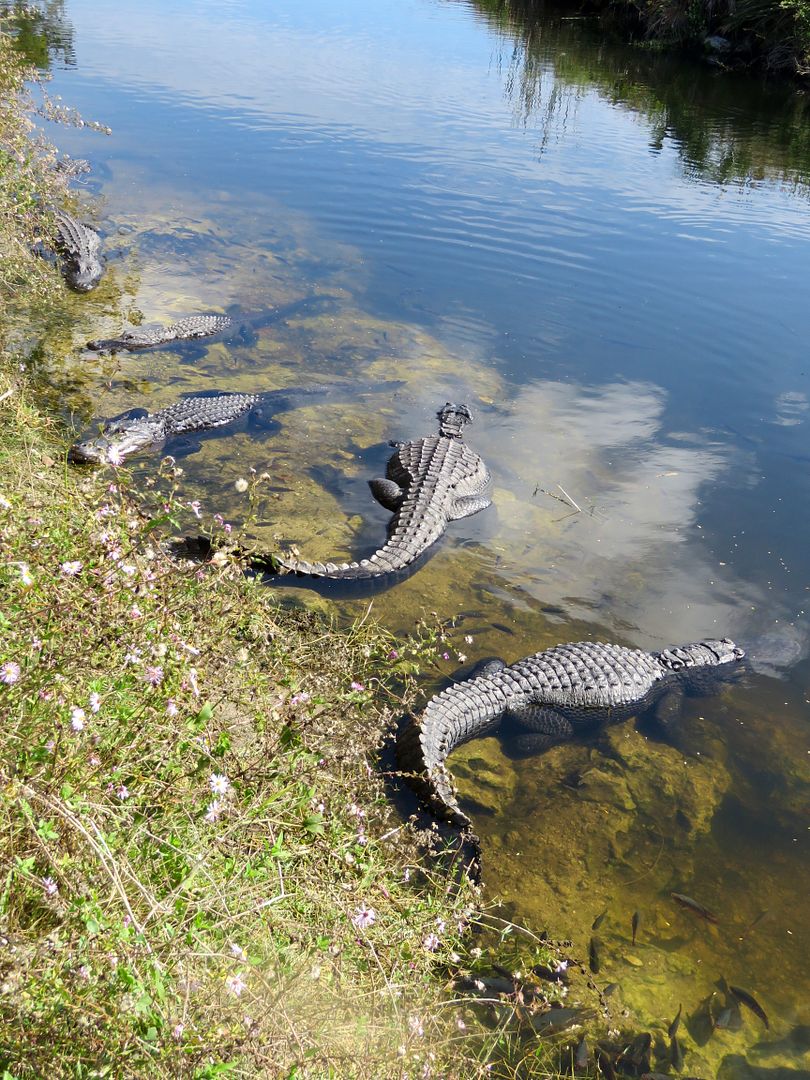
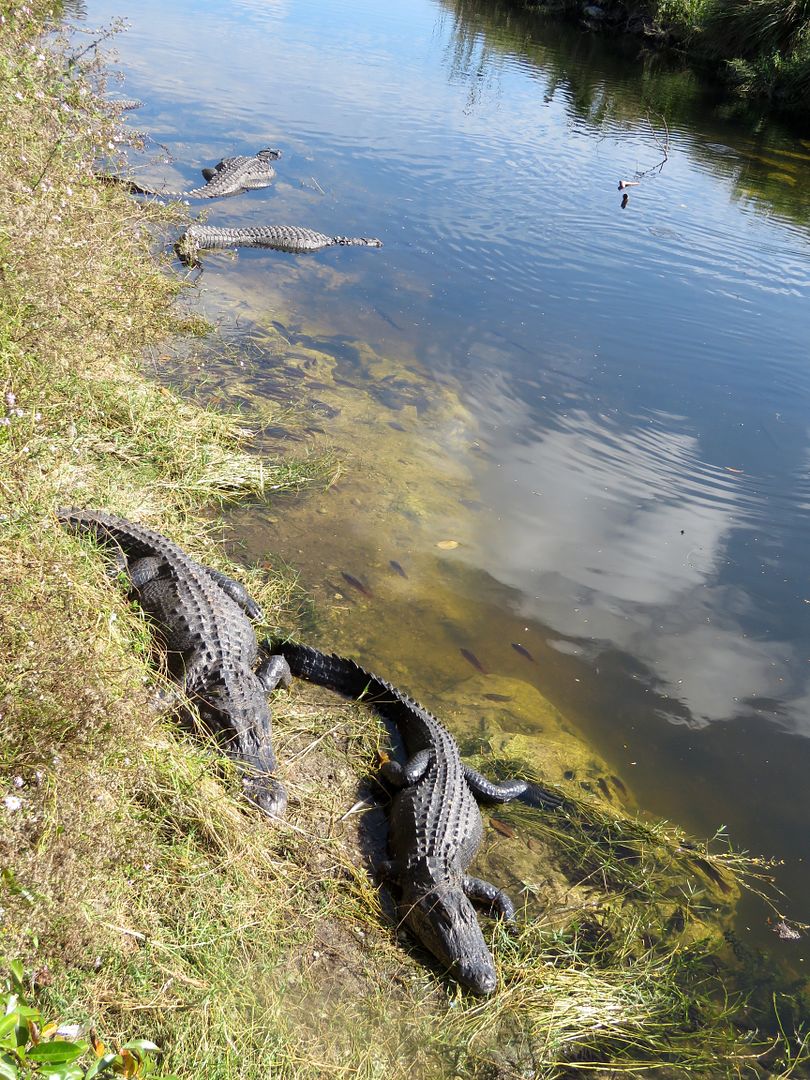

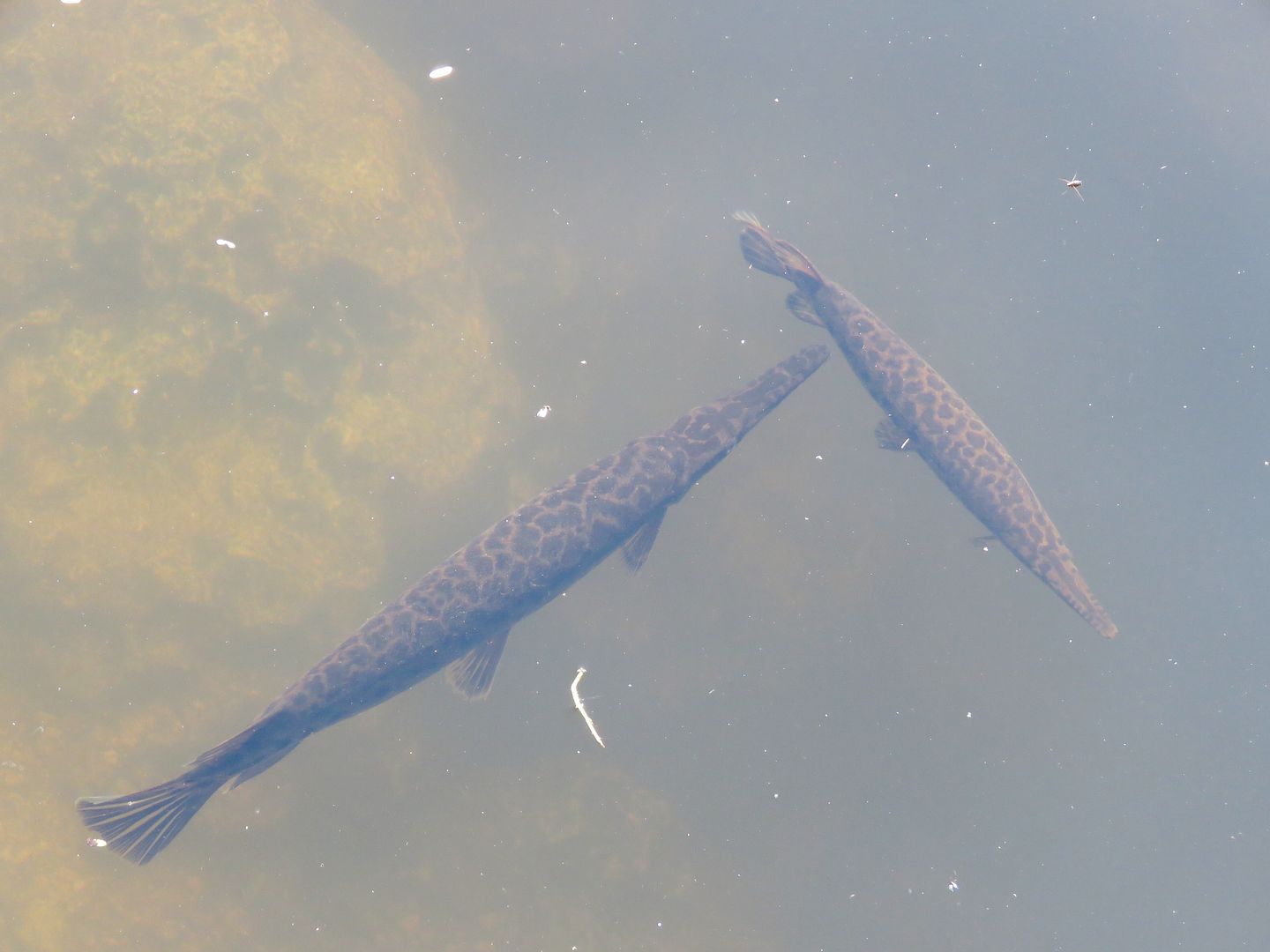
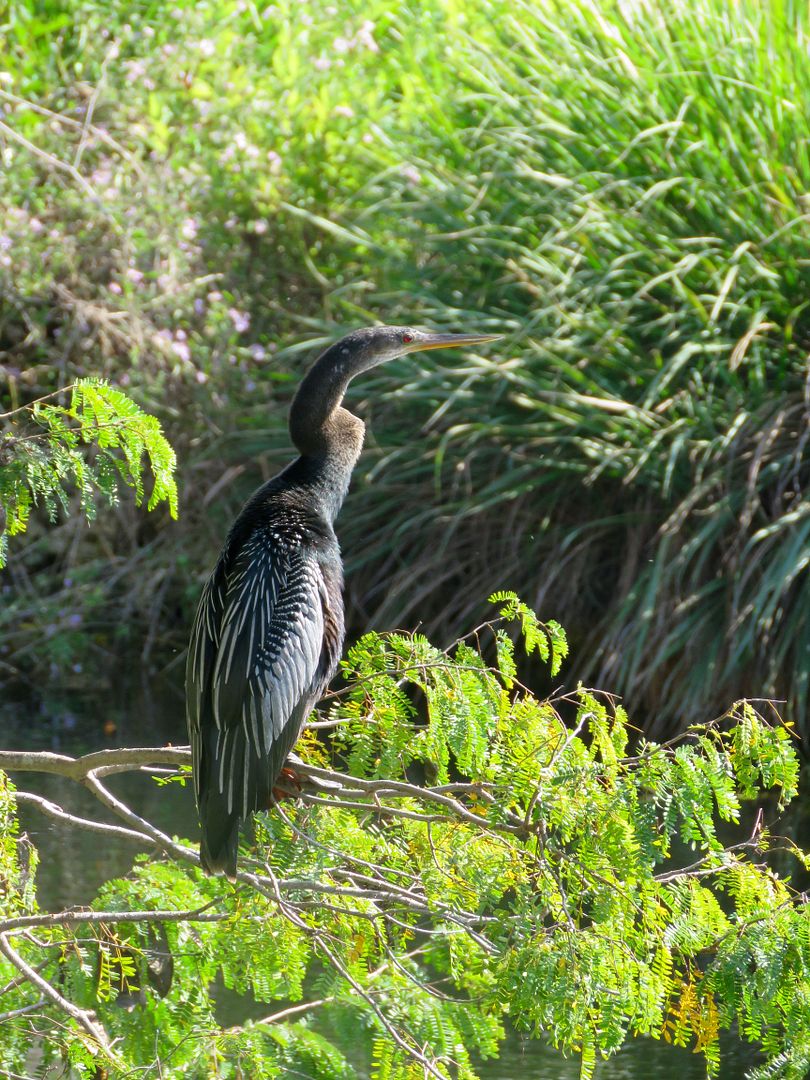
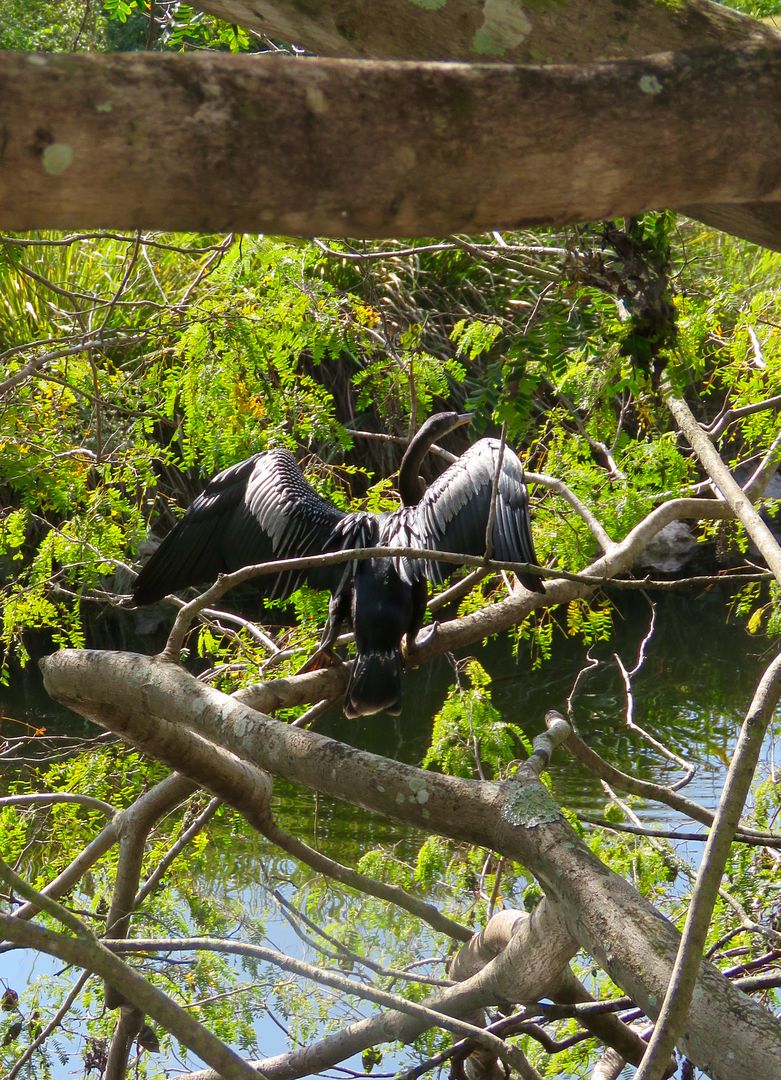


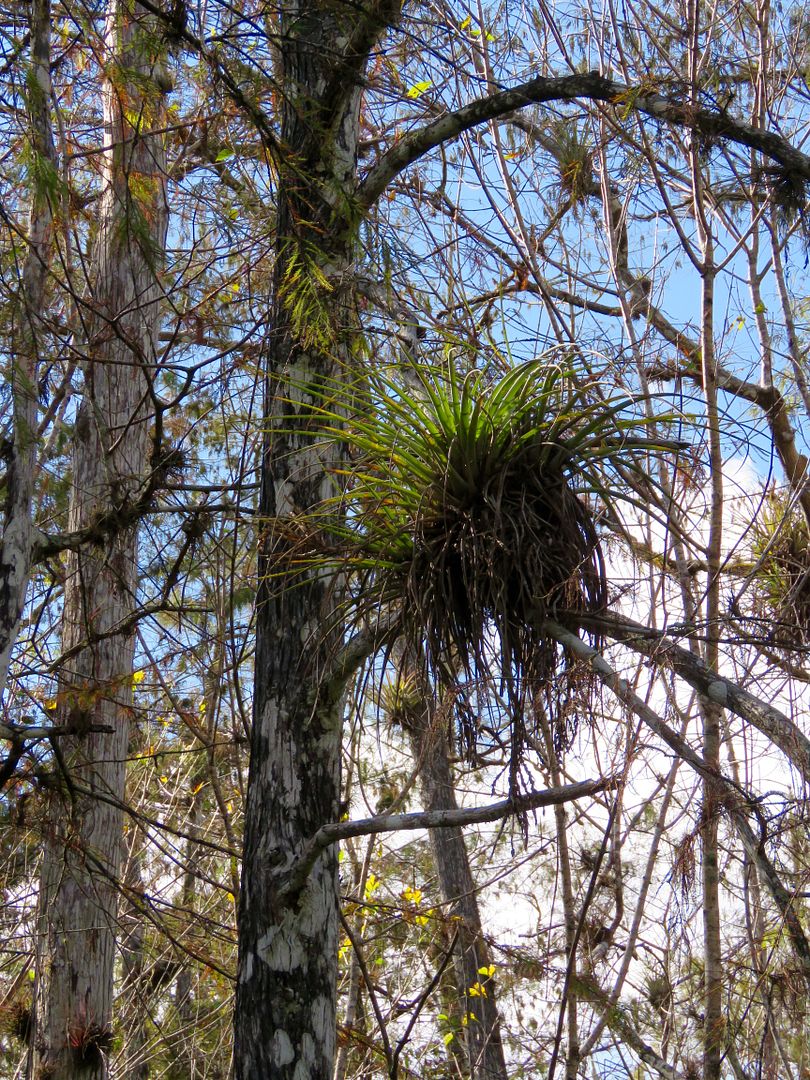
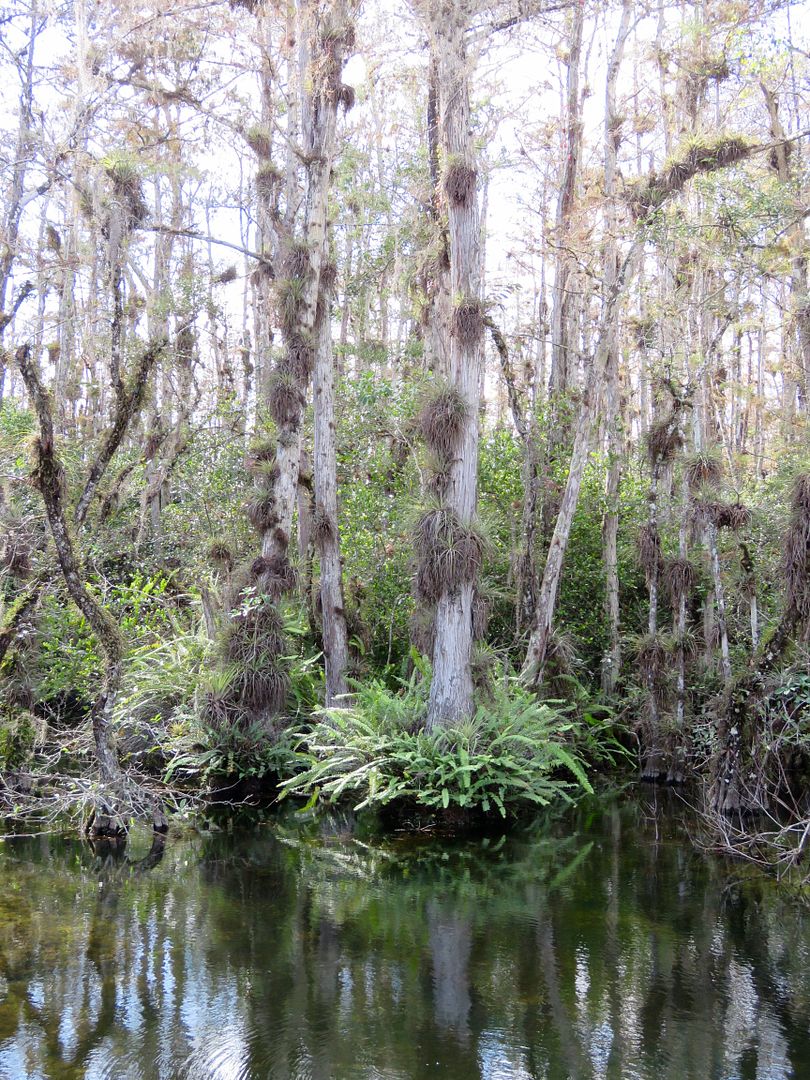

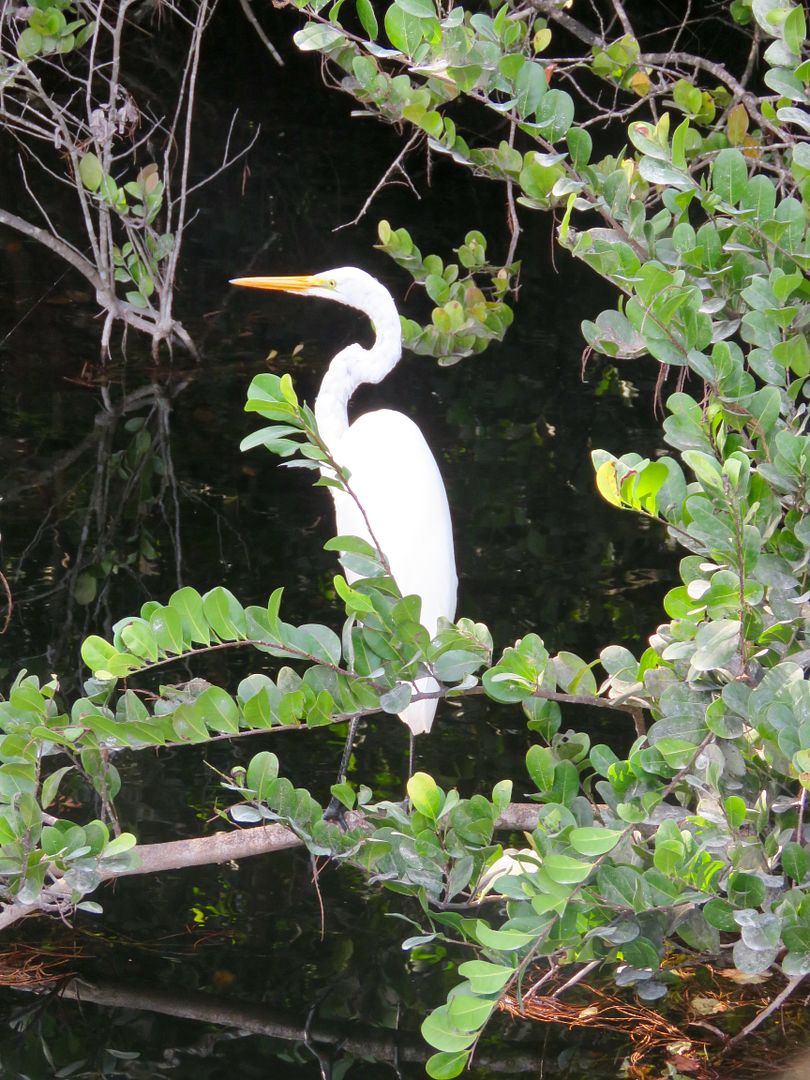


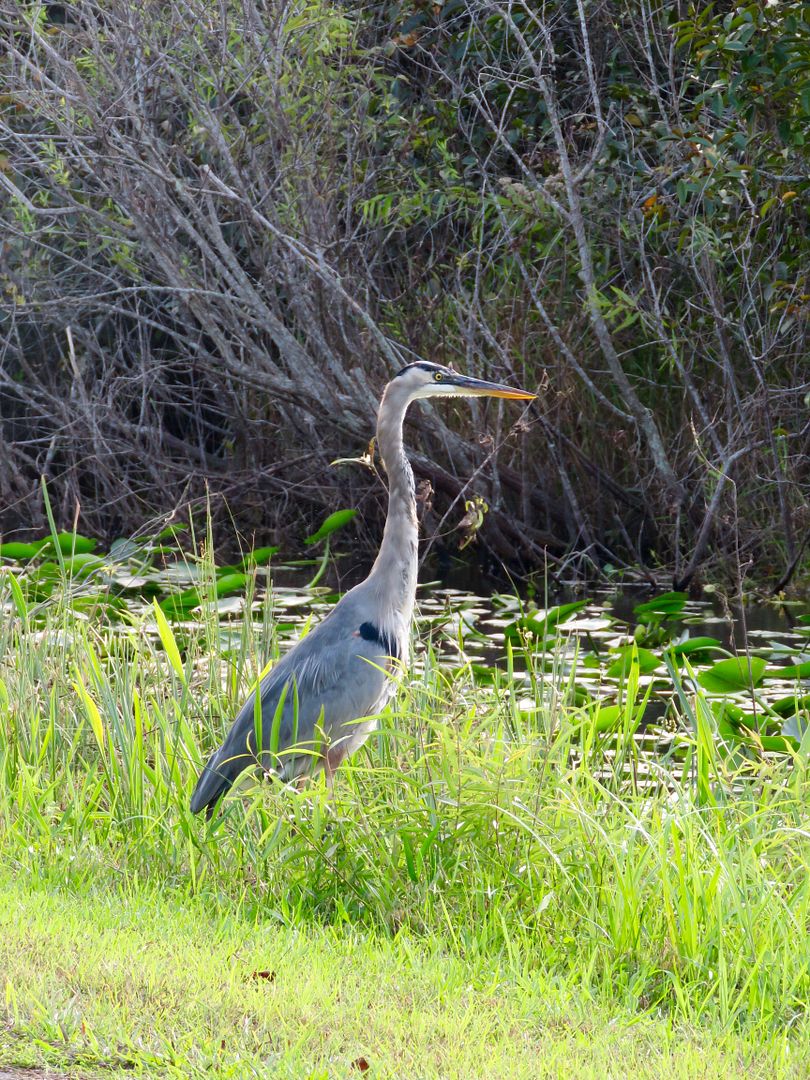
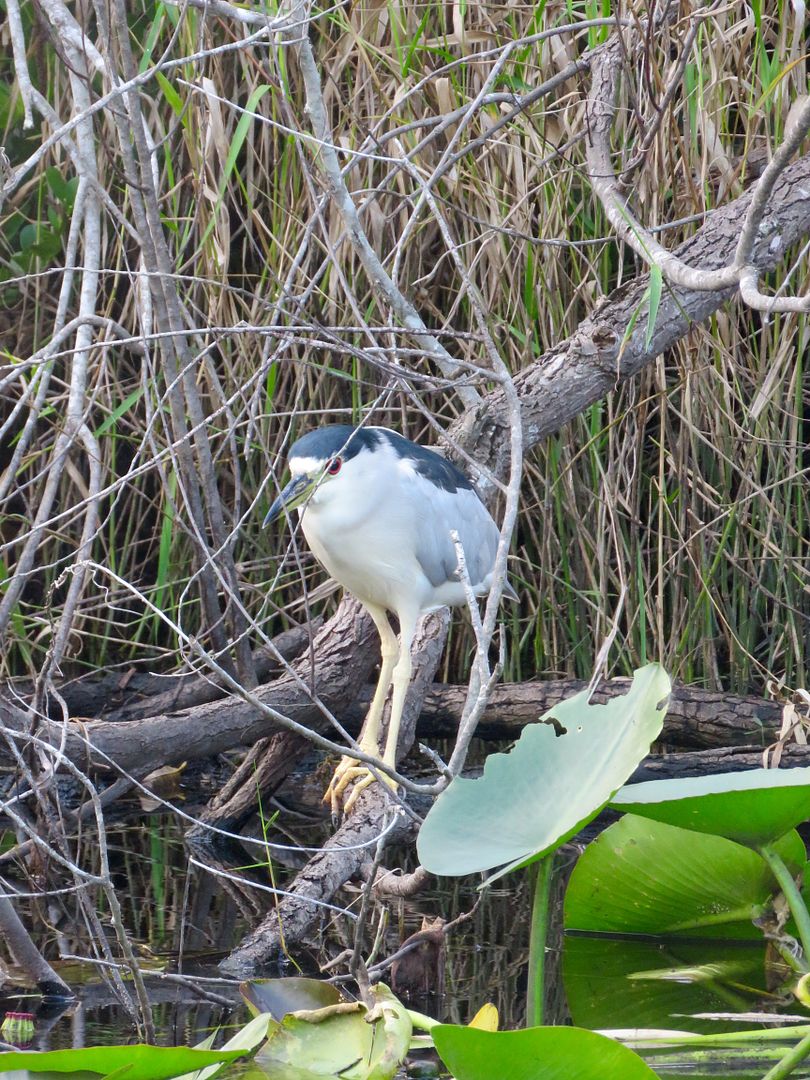
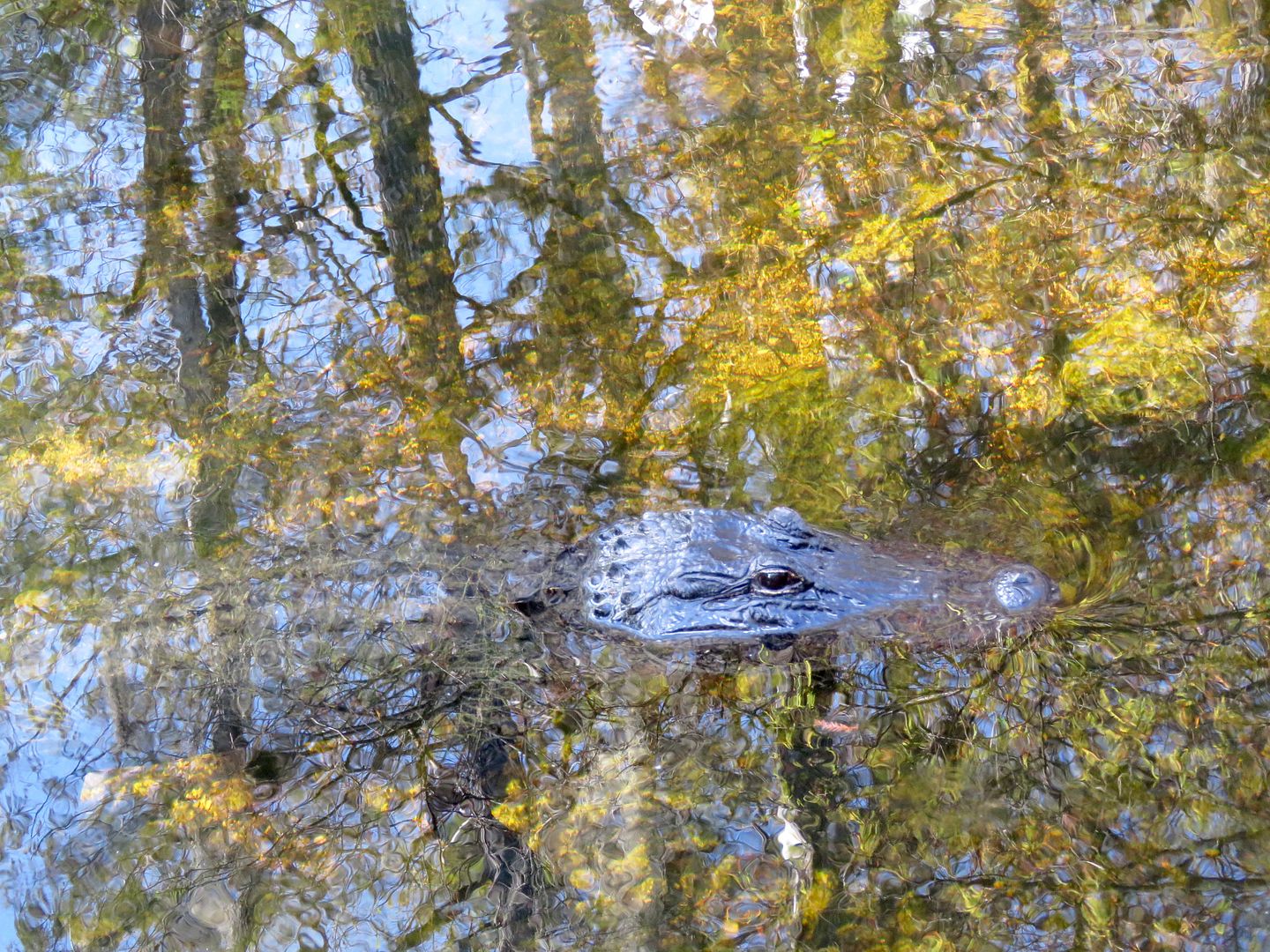
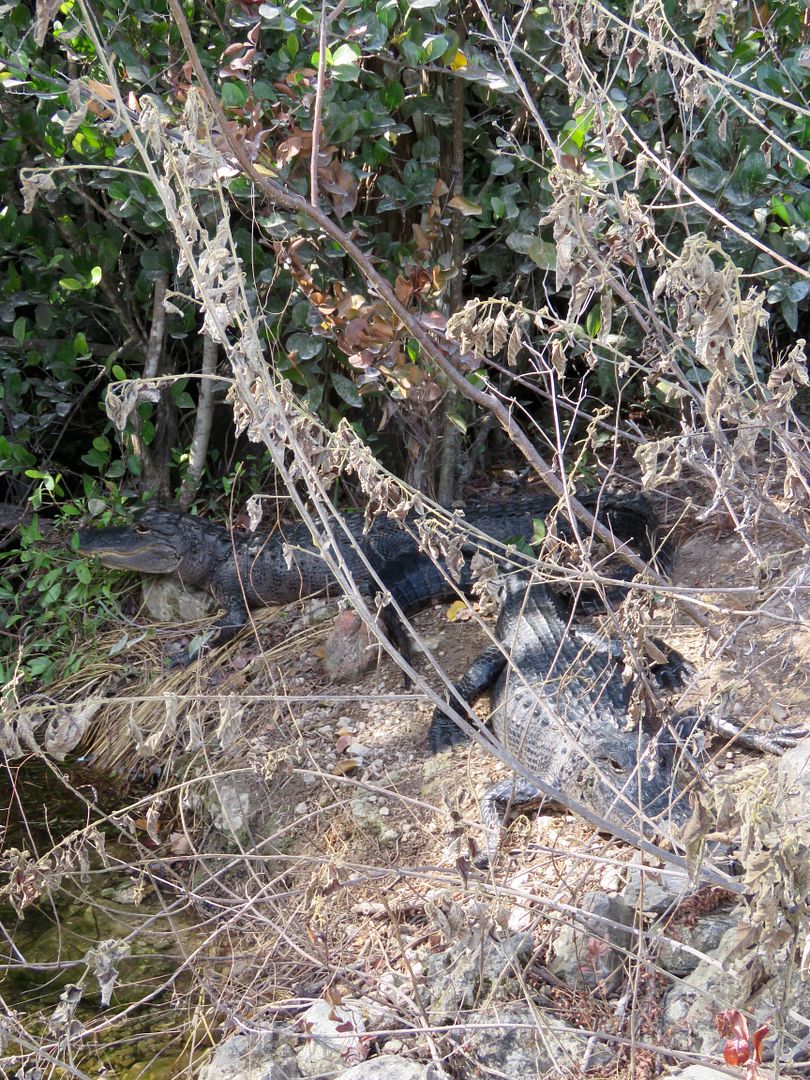
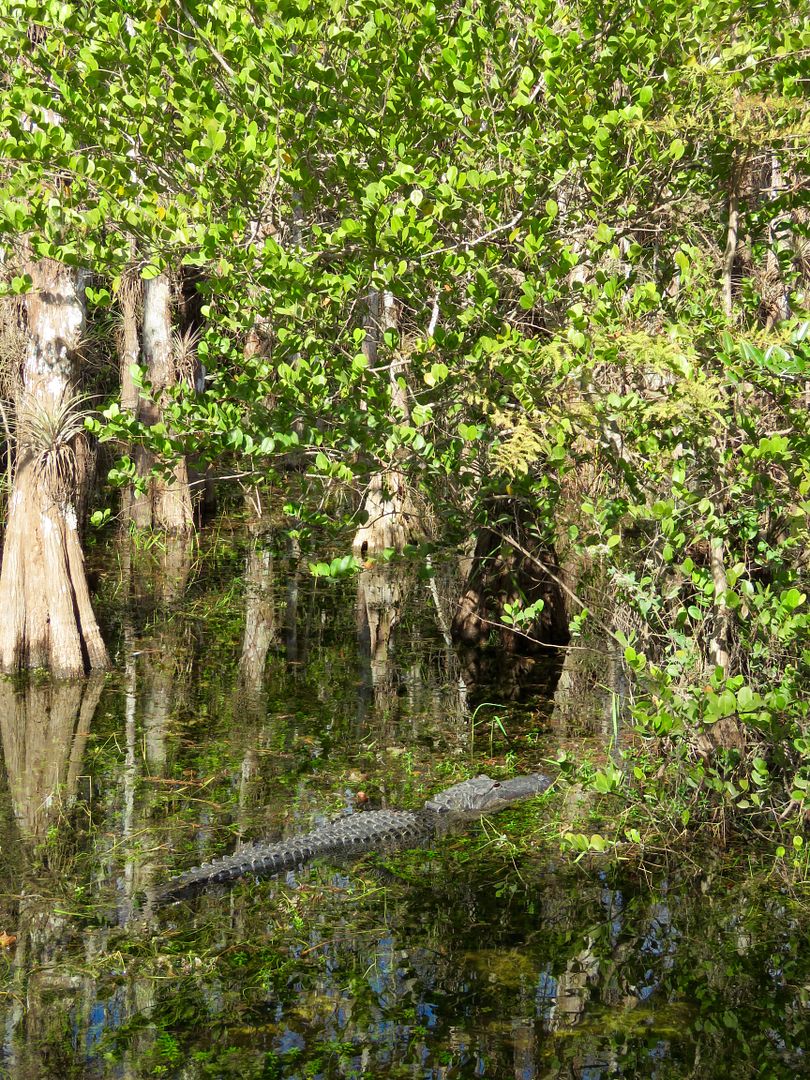
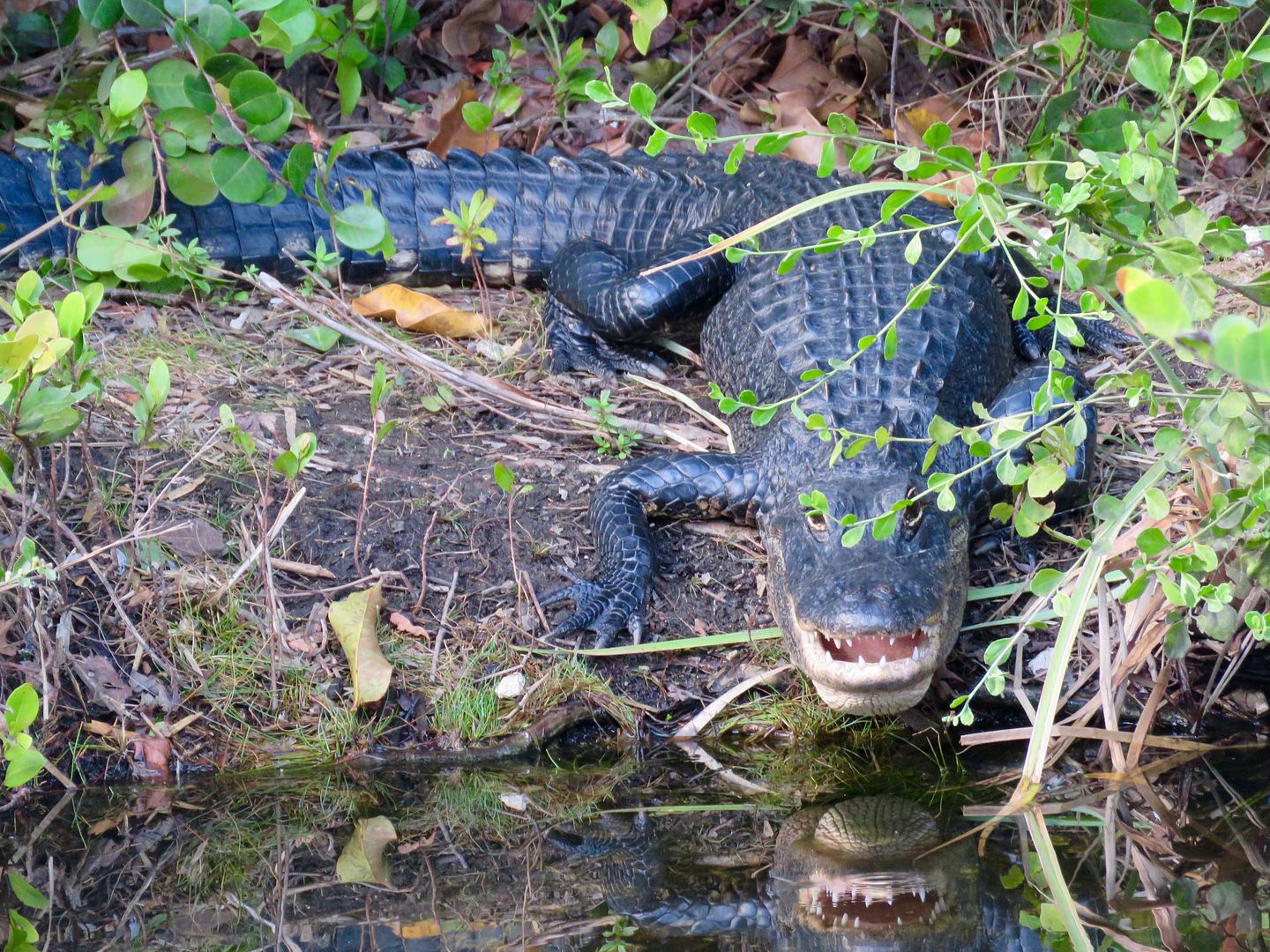
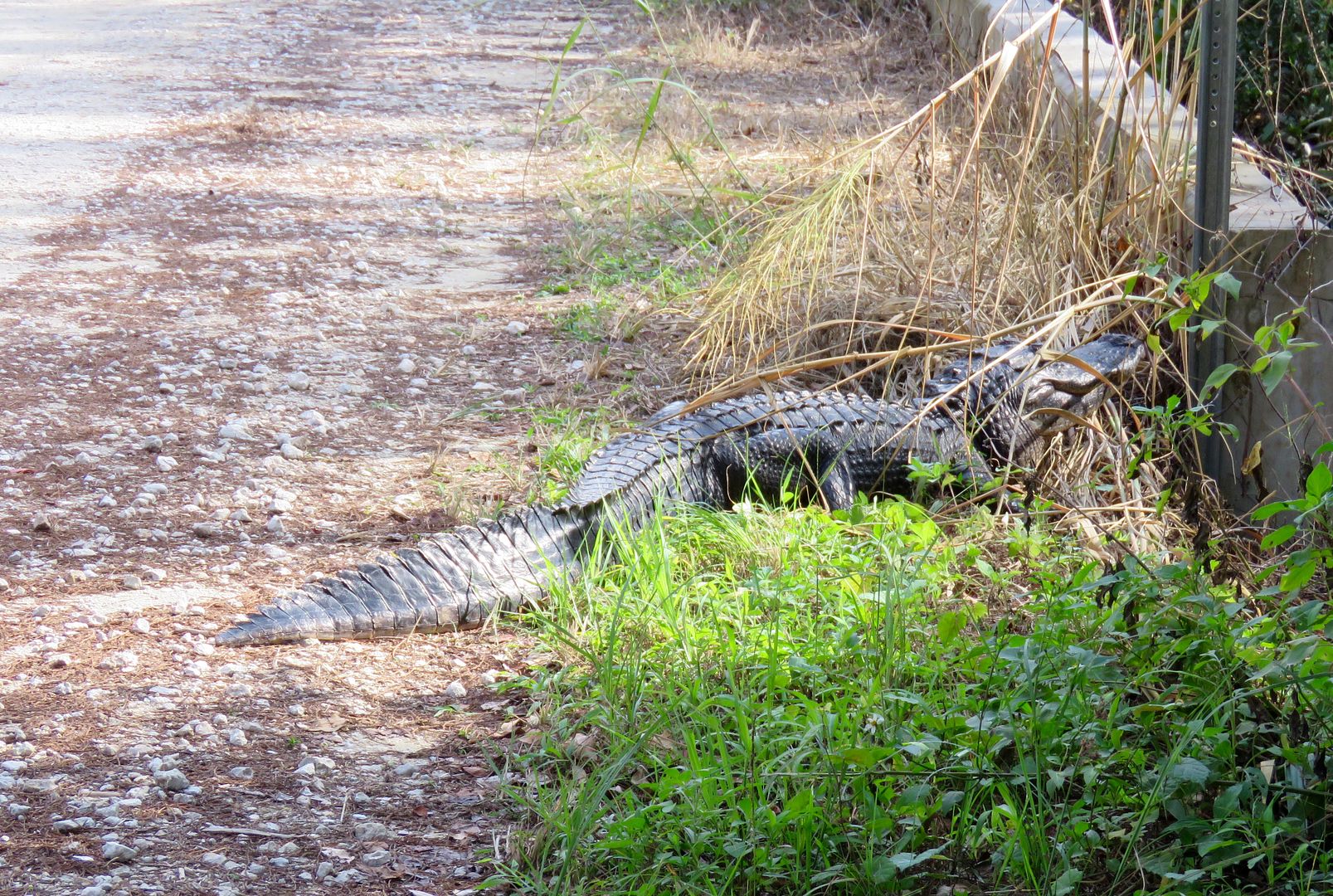

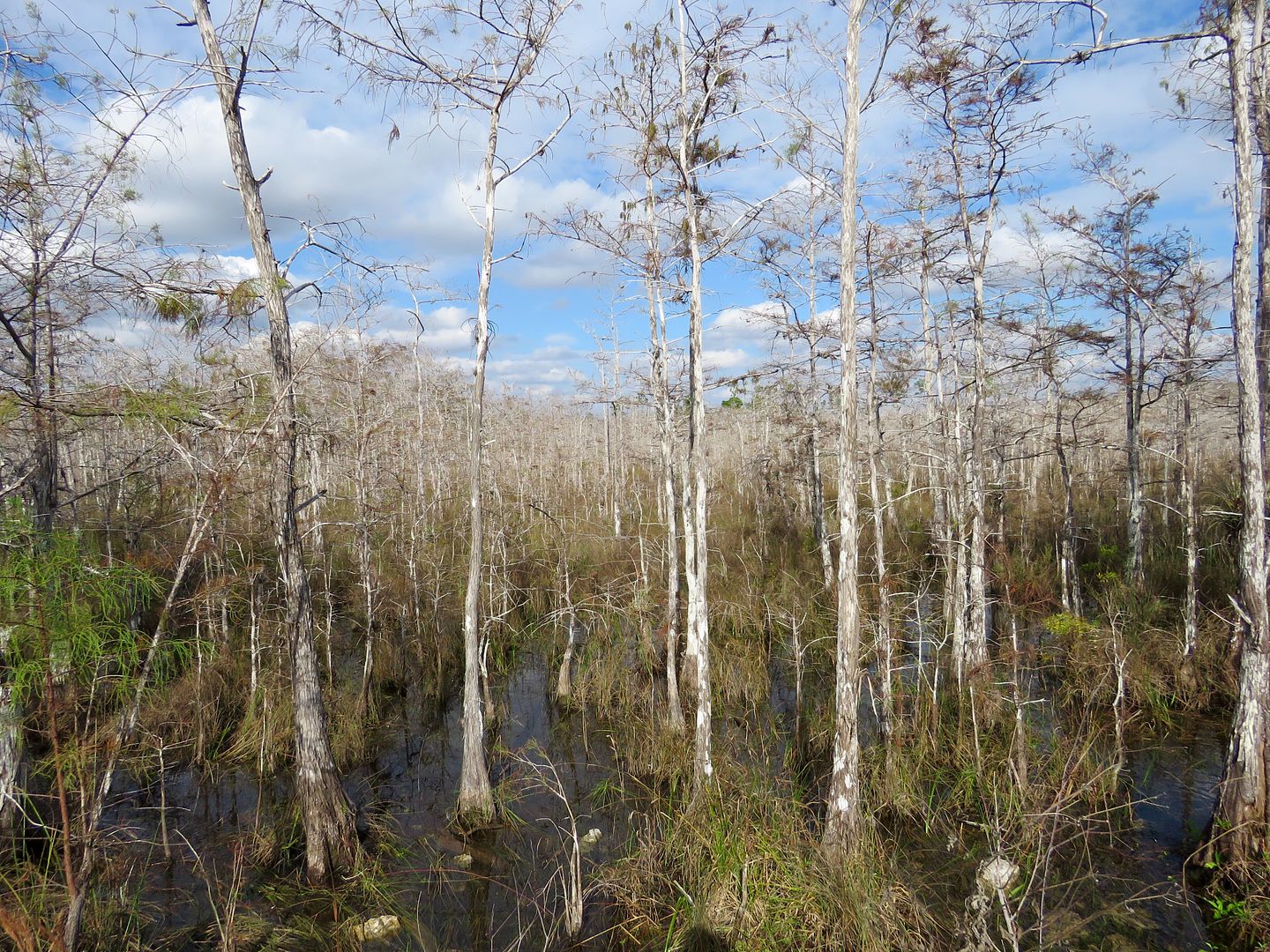
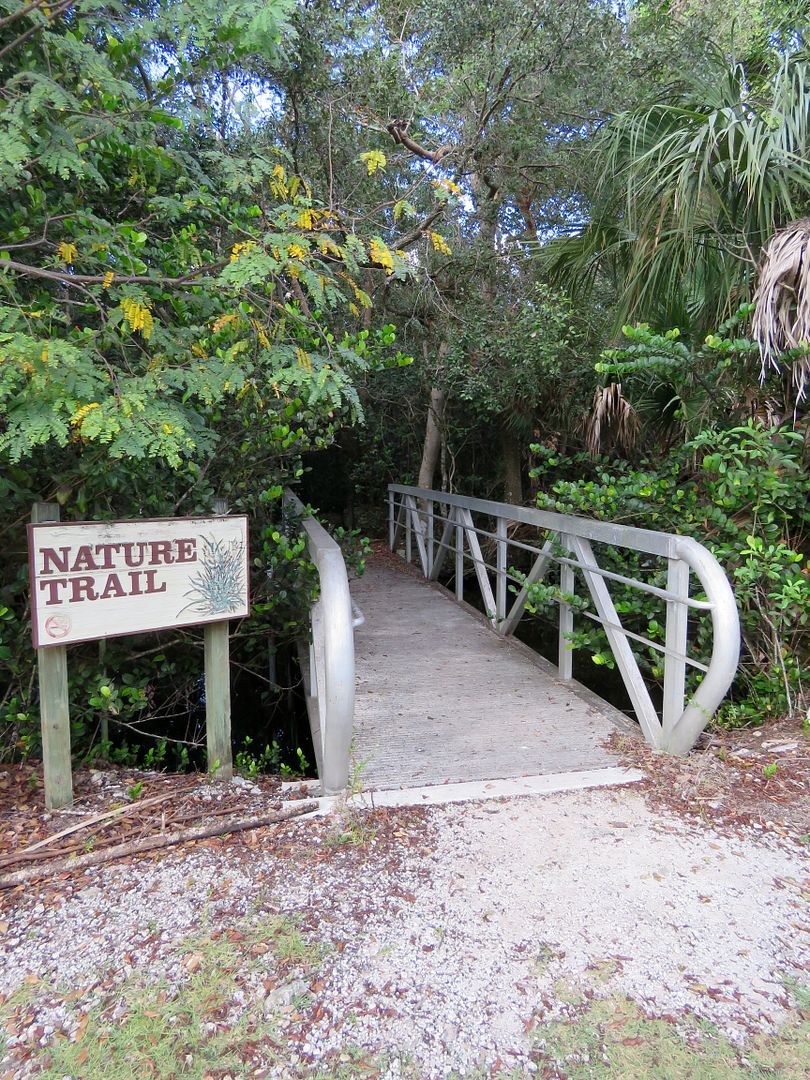
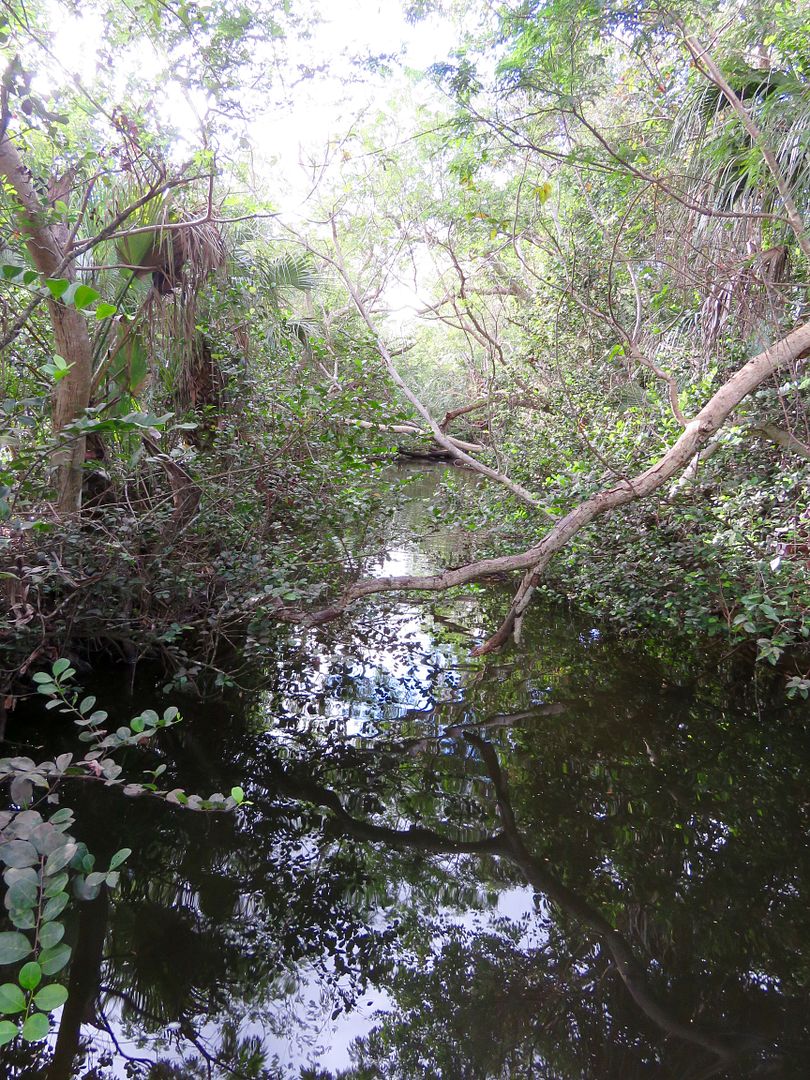

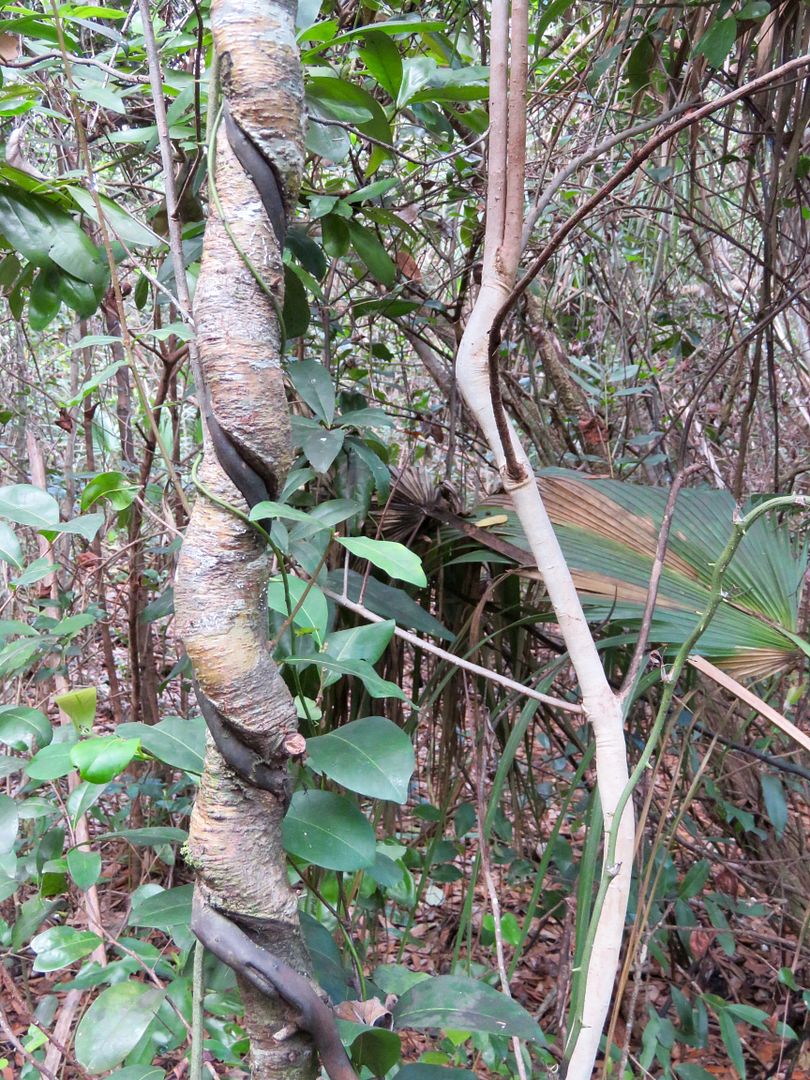

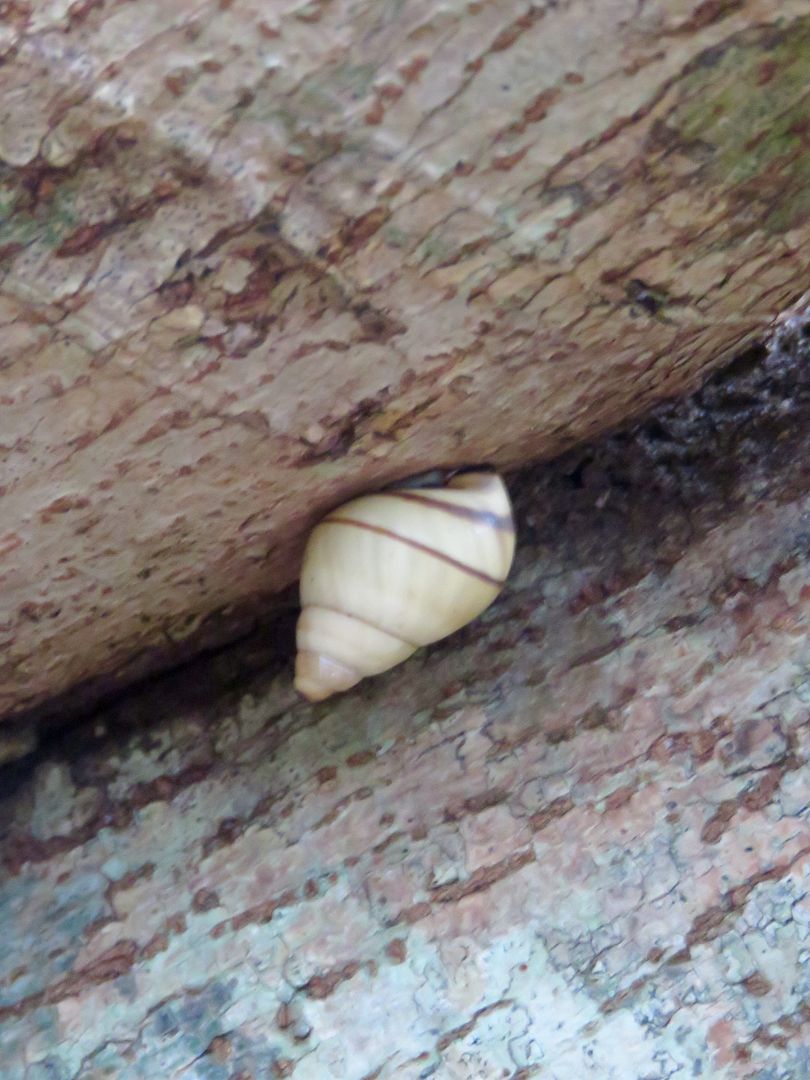
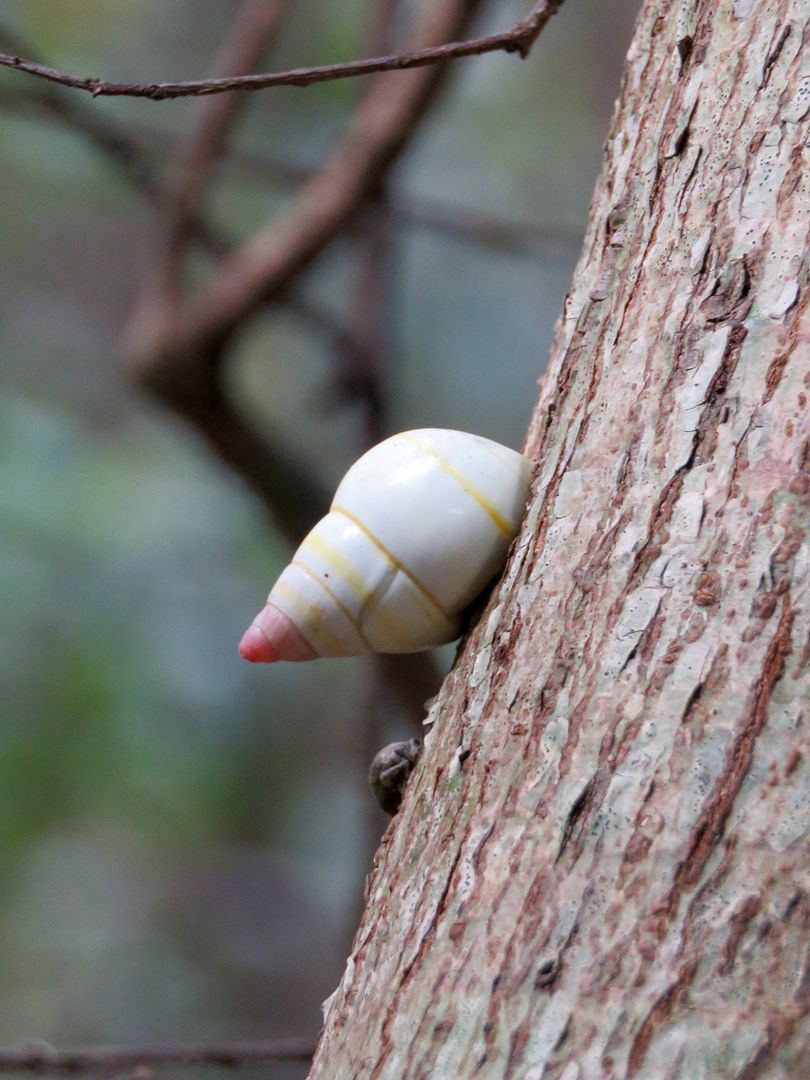
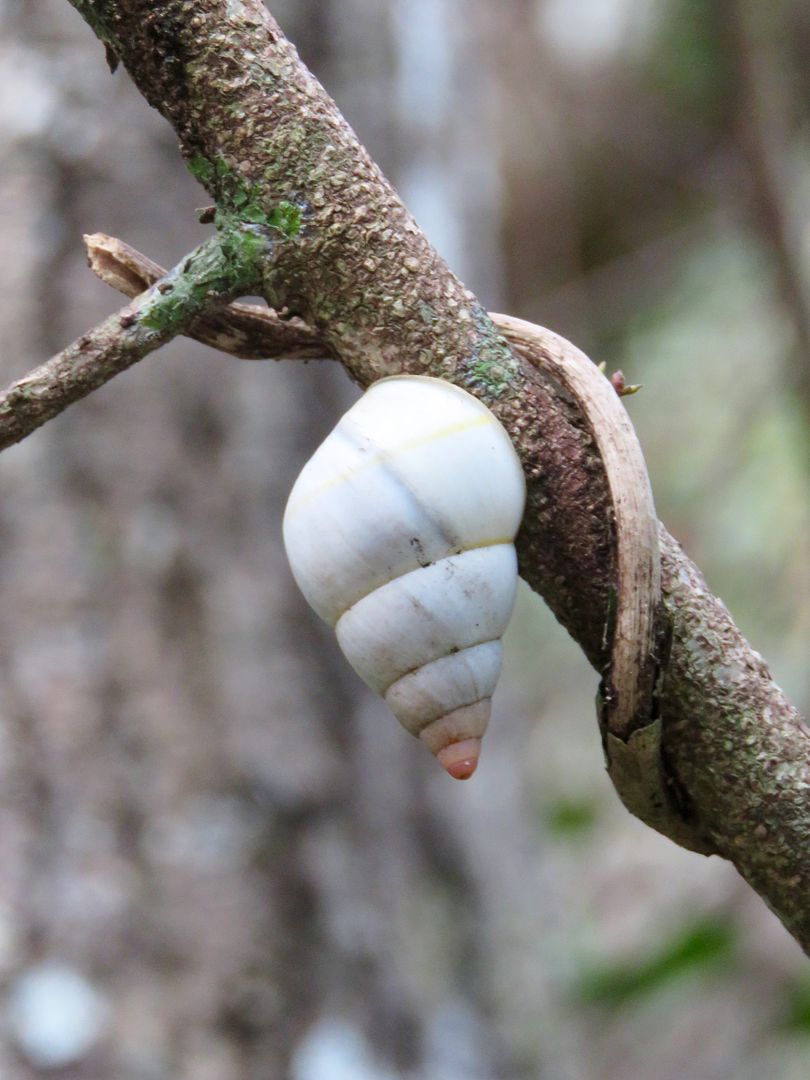
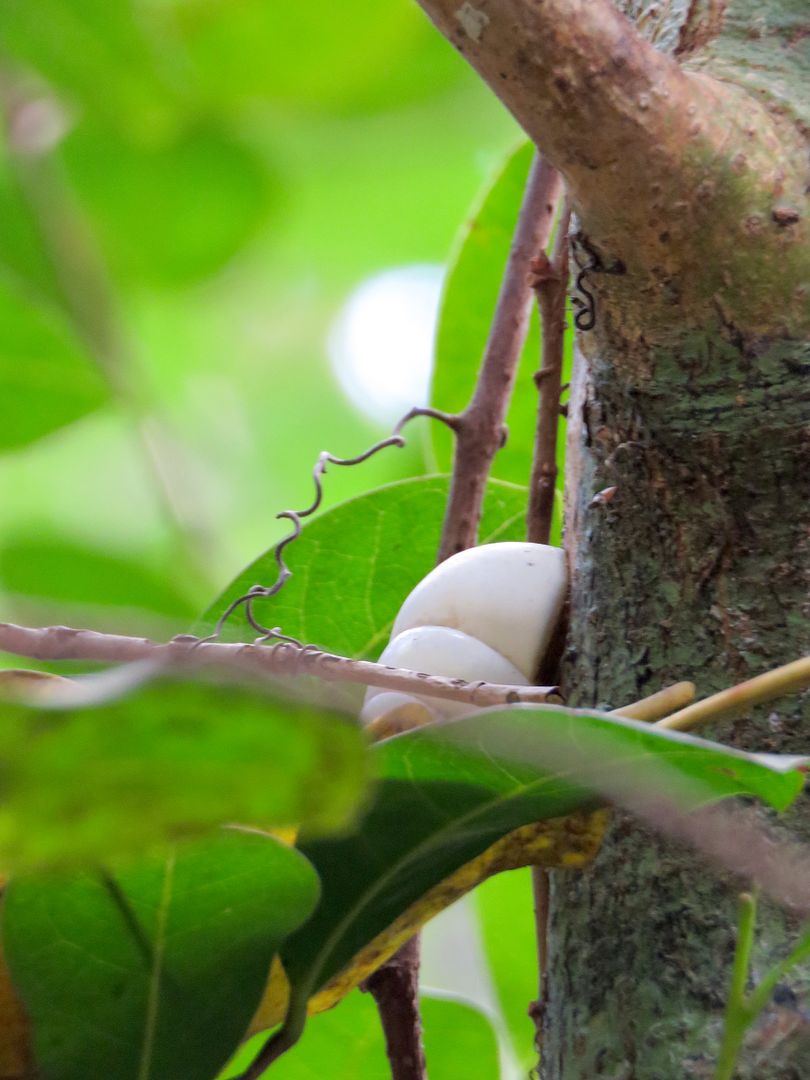


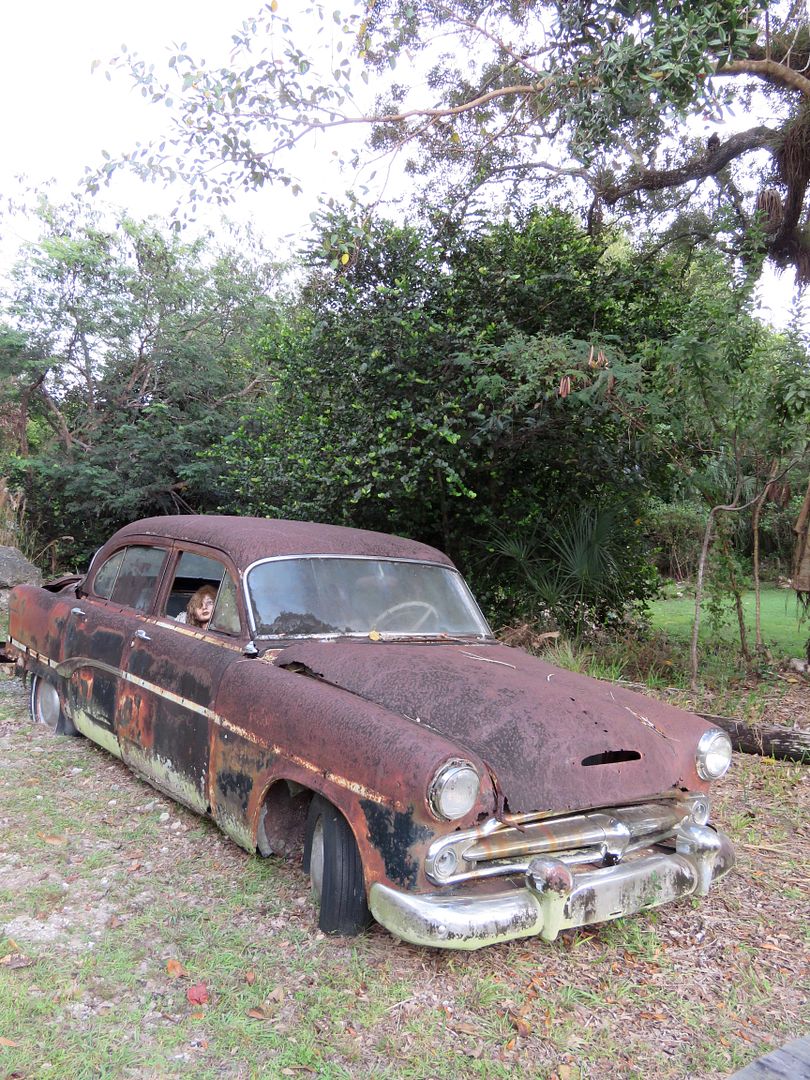
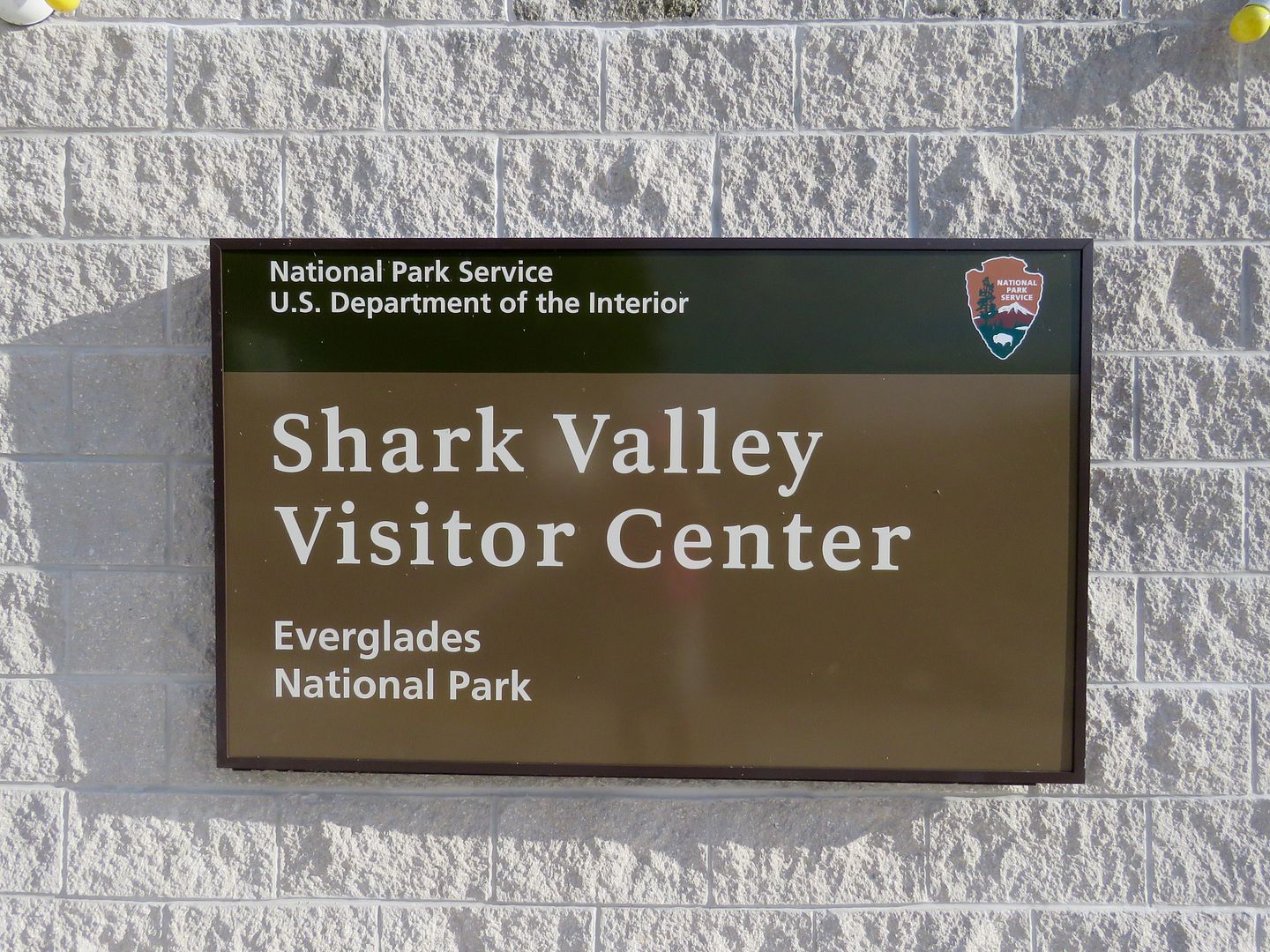
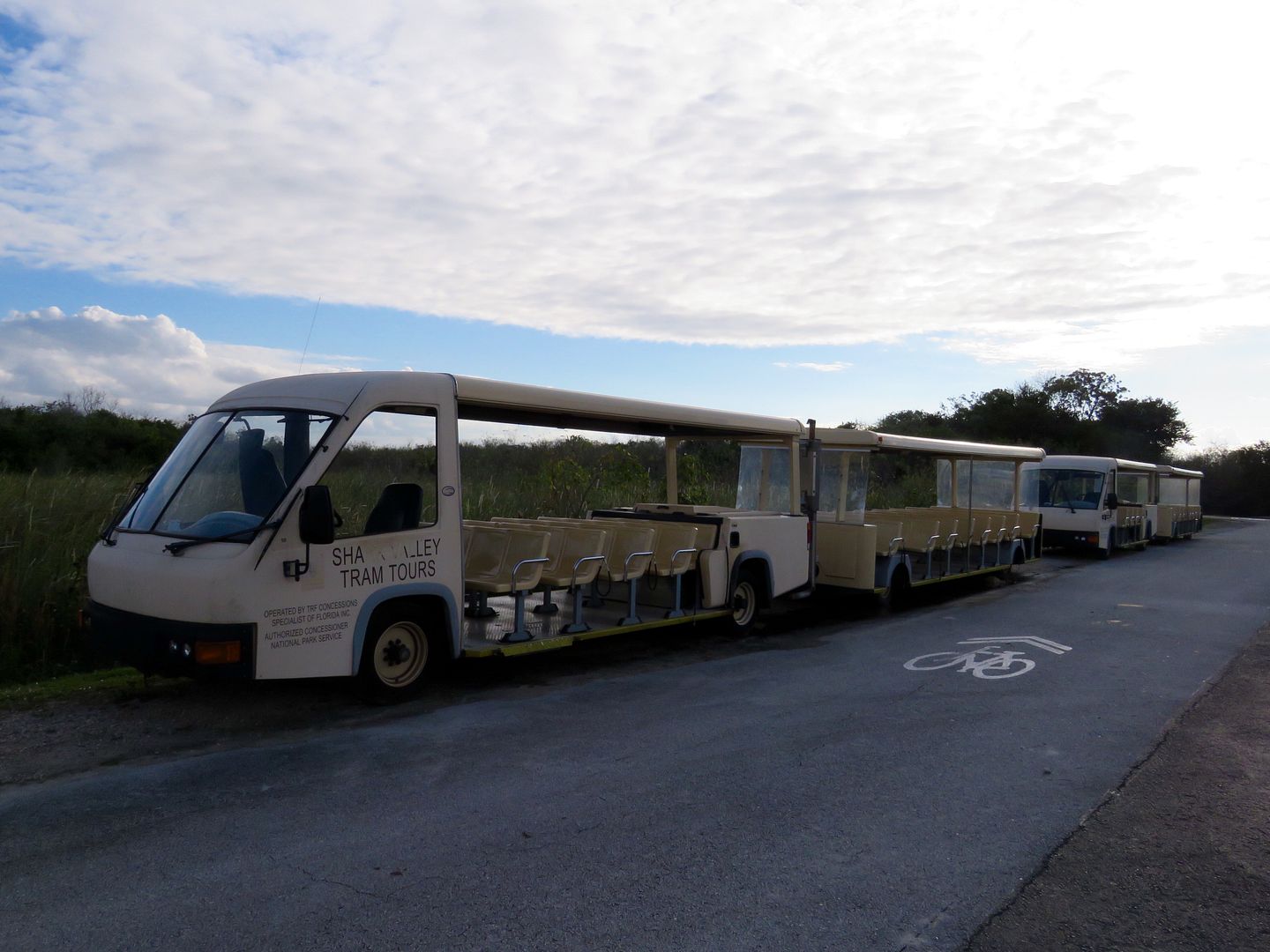



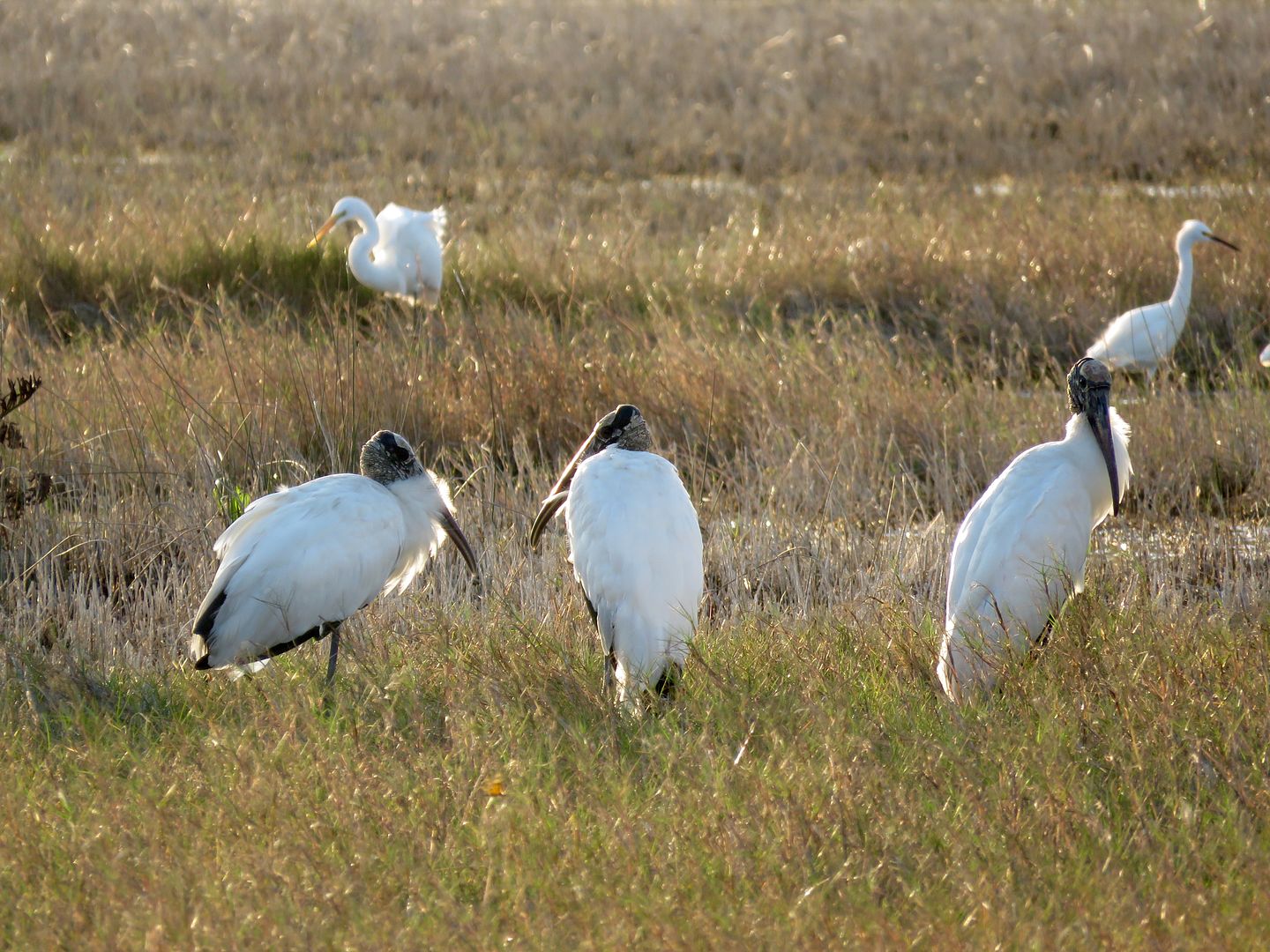


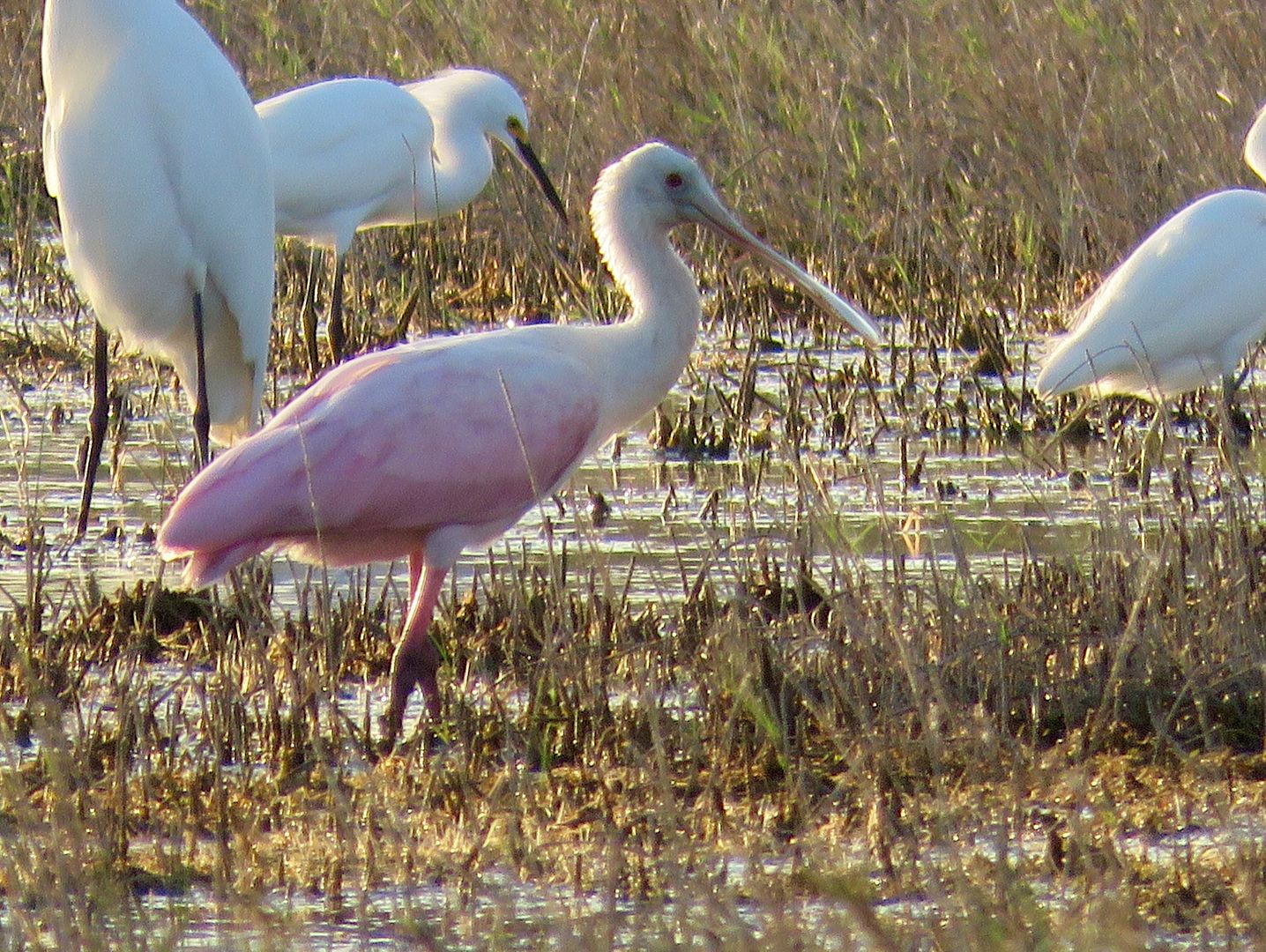
No comments:
Post a Comment